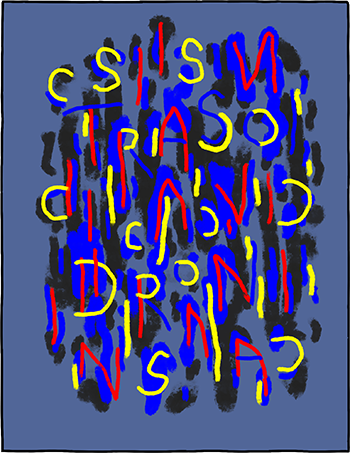

trasodroni
the mercurialists
prefix traso suffix droni
re undamerus
physical appearance
The trasodroni /ˈtɹeɪsoʊdroʊni/ is a stranger that resembles a puddle on the ground. Its body is made of water, which ranges from clear, to dark and muddy, and possesses no other special properties. The trasodroni appears only on completely flat surfaces, and is less than a quarter-millimeter in depth, but distorts light in such a way so as to appear as an indentation upon the earth. The trasodroni's exact size and shape vary between individuals, and no two trasodroni are identical. Its silhouette is always simplified to a pointed, featureless head, a slender body and tail, and four tapered, handless limbs.
The trasodroni can be killed by evaporation, but otherwise, tends to resist splashing, stomping, or suction of its form, regenerating lost water at a near-instantaneous rate.
the sound of the rain hitting pavement.

environment and generation
The trasodroni generates in a wide range of outdoor locations, appearing during rainy weather and growing larger drop-by-drop in the same way that a normal puddle would. It prefers a temperature range of between 40°-66°F.
behaviour and effects
The trasodroni's disposition is cruel, but persevering. It does not display any ability to move or interact with the world around it, and thus remains forced into patience. It remains silent as it lies in wait.
interactions with sensitives
The trasodroni hides itself from sensitives by altering their sense of recognition; as such, despite its unusual shape, the trasodroni does not tend to be perceived as anything but an ordinary puddle. Although not uncommon, it tends to escape notice.

When a sensitive looks into the trasodroni's surface, their reflection is not a perfect mirror image, but instead resembles an exact copy of the observer that mimics their every motion. Reflections rarely blink, but when they do blink, these movements are not in sync with the blinks of the person being mimicked. Despite this, individuals who look at their reflection only briefly, or who do not make any quick movements, rarely notice anything amiss about their reflection. Quick motions, however, throw off the trasodroni – if the onlooker suddenly waves their hand, for example, the reflection in the trasodroni's surface may take a moment to catch up.
When a sensitive stares at their reflection in the trasodroni's surface for more than a few minutes, they run the risk of losing the ability recognize their own face when they look in the mirror or at photographs or videos of themselves.
This absence of familiarity extends to mental visualizations as well, and affected individuals lose the ability to remember what they look like at all. Although they are able to remember the presence of certain details (i.e. hair color and length, eye and skin color), they are not able to piece these details together into a cohesive, familiar mental image. Affected individuals may either avoid looking at their face altogether, or may grow more and more obsessed with their appearance in the futile hope of gaining self-recognition once more.

The severity of this unfamiliarity correlates with the length of time spent looking into the trasodroni's surface. Individuals who stare at their reflection for only a few minutes are able to eventually shake this feeling of unfamiliarity, while those individuals who have gazed at their reflection for a prolonged period of time are never able to recognize their own face again, no matter how long they study the details.
aging and death
Once the rain ceases and the puddles on the ground dry up, the trasodroni disappears in a process that resembles evaporation, a slave to the same processes that created it.
As the trasodroni grows smaller and its depths appear shallower, it reacts in terror to its impending death, and sensitives nearby report a faint, frantic voice at the edge of their hearing, or experience a sensation of incredible pressure in their head. These effects grow more apparent the more the trasodroni evaporates, and any sensitive near the trasodroni during its last seconds of life experiences unbearable head pain and anxiety brought on by the trasodroni's death cries.

The trasodroni leaves nothing behind, save for a vaguely darkened patch on only the lightest expanses of concrete.





